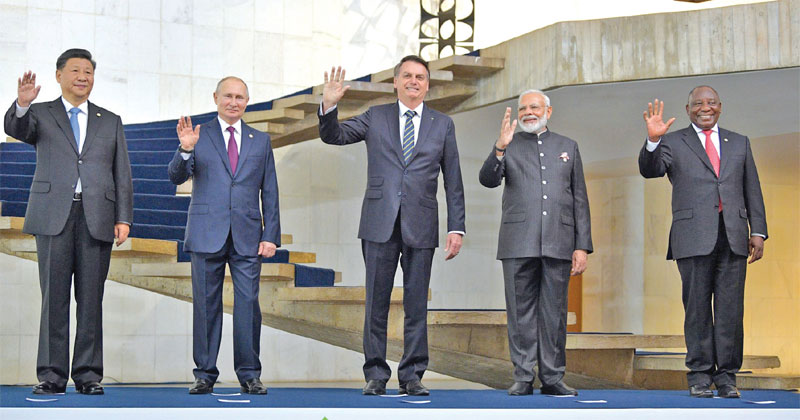Despite the present military threat, India remains dependent on Chinese technology
Smruti D
During the Doklam stand-off between Indian and Chinese armies in 2017, the Indian public was quick to react by engaging in a discourse around banning Chinese products from India. The fervour around it was so much that several Ganesh pandals during the religious festival known as Ganeshostav, which is celebrated across Maharashtra adopted the banning of Chinese goods as a theme.

This was repeated when the Ladakh stand-off started in 2020. This time, the campaign was driven by Sonam Wangchuk, an engineer, innovator and education reformist based in Ladakh. In a video that went viral, Wangchuk called on Indians and people the world over to use their ‘wallet power’ to weaken Chinese economy. He asked people to stop using Chinese software and hardware, including phones and computers. “If we boycott these goods, it’ll send a clear message to China that the world is not happy with you,” he said.
His message failed to hit home. According to government of India data, India’s imports from China rose by 33 per cent in the April-June quarter of last year. In fact, the Chinese city of Yiwu, which is the world’s largest wholesale market of small commodities makes its money from export. India is its number one market. Chinese technology is integral to our everyday lives, despite the Indian government banning 59 Chinese apps in January 2021 under Section 69A of the IT Act.
Most recently, according to China’s General Administration of Customs’ (GAC) data published in December 2021, the India-China trade has crossed USD 100 billion. This figure was up by 46.4 per cent year-on-year from January to November recorded last year. While India’s exports to China reached USD 26.358 billion (a 38.5 per cent increase), India’s imports from China amounted to USD 87.905 billion (a 49 per cent increase). Trade deficit stood at 61.547 billion, a 53.49 per cent increase.
Take the example of Chinese video conferencing platform ‘Zoom’, which was the lifeline of people forced to work from home during the pandemic. An Indian Express report from May 2020 quotes Zoom India head and general manager, Sameer Raje as saying, ‘We have grown from 10 million participants a day to over 300 million participants a day on our platform and that’s happened in a period of 12 weeks.’ He added that India’s chunk was quite significant. Zoom became the most downloaded app in India, beating TikTok, Instagram and WhatsApp.
The civilian population is not the only one hooked onto Chinese technology. Recently, Indian Space Research Organisation (ISRO) signed an agreement with the Chinese firm Oppo, an electronic device maker. This agreement aims at strengthening research and development (R&D) of the NavIC messaging service, which provides detailed regional navigation services covering the Indian mainland and an area up to 1,500 km beyond the Indian mainland. In addition to its primary function of providing PNT (position, navigation and timing) services, NavIC is also capable of broadcasting short messages.
In a statement, Oppo India said, ‘The memorandum will pave the way for future collaborations between ISRO and Oppo India to develop indigenous solutions by incorporating the NavIC short messaging feature in the smart-phones released by OPPO India.’ The application will provide exchange of technical information of NavIC messaging services to build rapid, ready to use, end-to-end application-specific solutions. ISRO Chairman, K. Sivan urged Oppo India to include NavIC in all their upcoming platforms.
Furthermore, major Indian start-ups such as Zomato, Swiggy, Big Basket, Policy Bazaar, Flipkart, Ola etc., have huge Chinese investments. India’s pharmaceutical sector too is a major recipient of Chinese FDI.
After a gap pf nine months after the Ladakh border skirmish, the Indian government in February 2021 started clearing FDI proposals from China on a ‘case-by-case’ basis. In March, the government announced that Chinese investments in sectors critical for India or where local companies don’t have adequate capacity will be considered for approval.
China clearly remains India’s largest trading partner. With such dependence on China on the one hand, and military rivalry on the other, the question of whether India will be able to cut its dependence on China for the sake of its sovereignty, remains. According to Jabin T. Jacob, Associate Professor, Department of International Relations and Governance Studies, Shiv Nadar University, “No dependence is set in stone. At the same time, this reliance on Chinese imports is not always a bad thing, if China is able to supply what we need in the non-strategic sectors at a cheaper price than the West, why would we turn down the opportunity?” He believes there is no point in paying more for the same commodities, just because it is western.

He adds, “This rivalry is destined to continue for the foreseeable future. Apart from the simple difference of two competing political systems, there is also the similarity of both countries relying on imagined glories of the past and ideas of current greatness that prevent the two countries from viewing each other as partners to engage with instead of rivals to be countered. China more than India has this sort of an attitude.”
The two Asian neighbours have shared cultural and civilisational exchanges from ancient times. In those times, the exchanges happened through different trade routes such as the Silk Route, Maritime Silk Route, Southern Silk Route and the Tibet-Nepal Route. These exchanges pertained to trade, culture and religion. Thanks to the two-way travel of monks and merchants, it is said that Buddhism spread to China from India. Today, the two Asian neighbours use Buddhism as soft power to influence the countries of the strategic Southeast Asian region.
You must be logged in to view this content.

